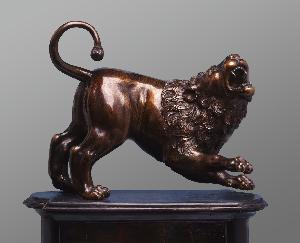Caspar Gras
Caspar Gras
Lugar: Innsbruck
Nascido: 1585
Morte: 1674
Biografia:
Caspar Gras was a German Old Masters sculptor who was born in Innsbruck, Austria in 1585. He worked for the Innsbruck Habsburg court from 1613 to 1632 and became one of the artists who contributed to the development of the Baroque style in Austria. Gras was trained by Hubert Gerhard, who was a student of Giambologna in Florence.
Artistic Career
Gras became one of the artists who worked in the tradition of the Italian Mannerist sculptor Giambologna. He is known for his sculptures of religious figures, mythological figures, and animals. Gras's sculptures are characterized by their dynamic poses, expressive faces, and intricate details. His most famous works include the statue of Archduke Ferdinand Carl of Tirol in the V&A Museum in London, and the sculpture Rearing Lion in the Frick Collection in New York City.
Notable Works
Some of Gras's notable works can be found on Wikioo.org, including:
- Caspar Gras: Sculpture of Archduke Ferdinand Carl of Tirol
- Rearing Lion: Sculpture in the Frick Collection
- Caspar Gras: Sculptures of religious figures and mythological figures
Influence and Legacy
Gras's work had a significant influence on the development of the Baroque style in Austria. He was one of the artists who contributed to the creation of a unique Austrian Baroque style, characterized by its use of dynamic poses, expressive faces, and intricate details. Gras's legacy can be seen in the work of other artists, such as Lorenzo Ayli, who was also a sculptor of the Baroque period.
Museums and Collections
Gras's works can be found in various museums and collections, including the V&A Museum in London and the Frick Collection in New York City. His sculptures are also featured on Wikioo.org, where they can be viewed and purchased as reproductions. Gras died in Innsbruck, Austria in 1674, leaving behind a legacy of beautiful and intricate sculptures that continue to inspire artists and art lovers today. His work can be seen as an example of the Baroque style's emphasis on drama, movement, and emotion. For more information about Gras and his works, visit Wikioo.org.

